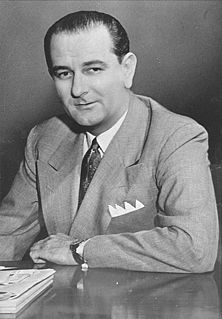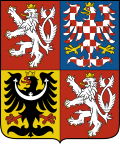
The Massachusetts Senate is the upper house of the Massachusetts General Court, the bicameral state legislature of the Commonwealth of Massachusetts. The Senate comprises 40 elected members from 40 single-member senatorial districts in the state. All but one of the districts are named for the counties in which they are located. Senators serve two-year terms, without term limits. The Senate convenes in the Massachusetts State House, in Boston.

The 1956 United States Senate elections were elections for the United States Senate that coincided with the re-election of President Dwight D. Eisenhower. Although the Democrats gained two seats in regular elections, the Republicans gained back two seats in special elections, leaving the party balance of the chamber remained unchanged.

In the United States Senate elections of 1912 and 1913, Democrats gained control of the Senate from the Republicans. This coincided with Democrat Woodrow Wilson's victory in the presidential election amid a divide in the Republican Party. In the Senate, Joseph M. Dixon and Miles Poindexter defected from the Republican Party and joined Theodore Roosevelt's new Progressive Party. Dixon, however, lost his seat during this election.

The 2010 United States Senate election in Alaska took place on November 2, 2010, alongside 33 other U.S. Senate elections in other states, as well as elections in all states for Representatives to the U.S. House, and various state and local offices.

The 2010 United States Senate election in Missouri took place on November 2, 2010 alongside 36 other elections to the United States Senate in other states as well as elections to the United States House of Representatives and various state and local elections. Primary elections were held on August 3, 2010. Incumbent Republican U.S. Senator Kit Bond decided to retire instead of seeking a fifth term. Republican nominee Roy Blunt won the open seat.

The 2010 United States Senate election in Alabama took place on November 2, 2010 alongside other elections to the United States Senate in other states, as well as elections to the United States House of Representatives and various state and local elections. Incumbent Republican United States Senator Richard Shelby won re-election to a fifth term.

The 2010 United States Senate election in Georgia took place on November 2, 2010. Incumbent Republican U.S. Senator Johnny Isakson won re-election to a second term.

The 2010 United States Senate election in South Dakota was held on November 2, 2010 along other elections to the United States Senate in other states as well as elections to the United States House of Representatives and various state and local elections. Incumbent Republican U.S. Senator John Thune won re-election to a second term unopposed.

The 2010 United States Senate election in Oregon was held on November 2, 2010 alongside other elections to the United States Senate in other states, as well as elections to the United States House of Representatives and various state and local elections. Incumbent Democratic U.S. Senator Ron Wyden won re-election to a third full term.

The 2010 United States Senate election in Vermont took place on November 2, 2010 alongside other elections to the United States Senate in other states as well as elections to the United States House of Representatives and various state and local elections. Democratic Senator Patrick Leahy was elected to a seventh term.

The 2014 United States Senate elections were held on November 4, 2014, they were a part of the United States 2014 elections. Thirty-three Class 2 seats in the 100-member United States Senate were up for election, in addition to three Class 3 seats due to expire on January 3, 2017. The candidates winning the regular elections would serve six-year terms from January 3, 2015 to January 3, 2021. The elections marked 100 years of direct elections of U.S. Senators. Twenty-one of the open seats were held by the Democratic Party, while fifteen were held by the Republican Party.

The United States Senate is the upper chamber of the United States Congress, which along with the United States House of Representatives—the lower chamber—comprises the legislature of the United States. The Senate chamber is located in the north wing of the Capitol, in Washington, D.C.
The United States Senate elections of 1852 and 1853 were elections which had the Democratic Party gain two seats in the United States Senate, and which coincided with the 1852 presidential election. Only six of the twenty Senators up for election were re-elected.

The United States Senate elections of 1858 and 1859 were elections which had the Republican Party gain five additional seats in the United States Senate, but the Democrats retained their majority. That majority would erode in 1860 with the secession of the southern states leading up to the Civil War. In Illinois, incumbent Stephen A. Douglas (D) and challenger Abraham Lincoln (R) held a series of seven debates, known as the "Lincoln–Douglas debates."
In the United States Senate elections of 1870 and 1871, the Republican Party lost five seats in the United States Senate, though it still retained an overwhelming majority. In advance of these elections, the last four seceded states were readmitted to the Senate.
The United States Senate elections of 1816 and 1817 were elections for the United States Senate that had the Democratic-Republican Party gain a net of two seats from the admission of a new state, and which coincided with the presidential election.
The United States Senate elections of 1820 and 1821 were elections for the United States Senate that, corresponding with James Monroe's landslide re-election, had the Democratic-Republican Party gain seven seats, assuming almost complete control of the Senate.
The United States Senate elections of 1864 and 1865 were elections corresponding with Abraham Lincoln's re-election, with the Republican Party gaining two seats in the United States Senate. As these elections occurred during the Civil War, most of the Southern States were absent.

The 2016 United States Senate election in Idaho was held November 8, 2016, to elect a member of the United States Senate to represent the State of Idaho, concurrently with the 2016 U.S. presidential election, as well as other elections to the United States Senate in other states and elections to the United States House of Representatives and various state and local elections. The primaries were held May 17.

The 2016 United States Senate election in Vermont was held November 8, 2016, to elect a member of the United States Senate to represent the state of Vermont, concurrently with the 2016 U.S. presidential election, as well as other elections to the United States Senate in other states and elections to the United States House of Representatives and various state and local elections. The primaries were held August 9.















